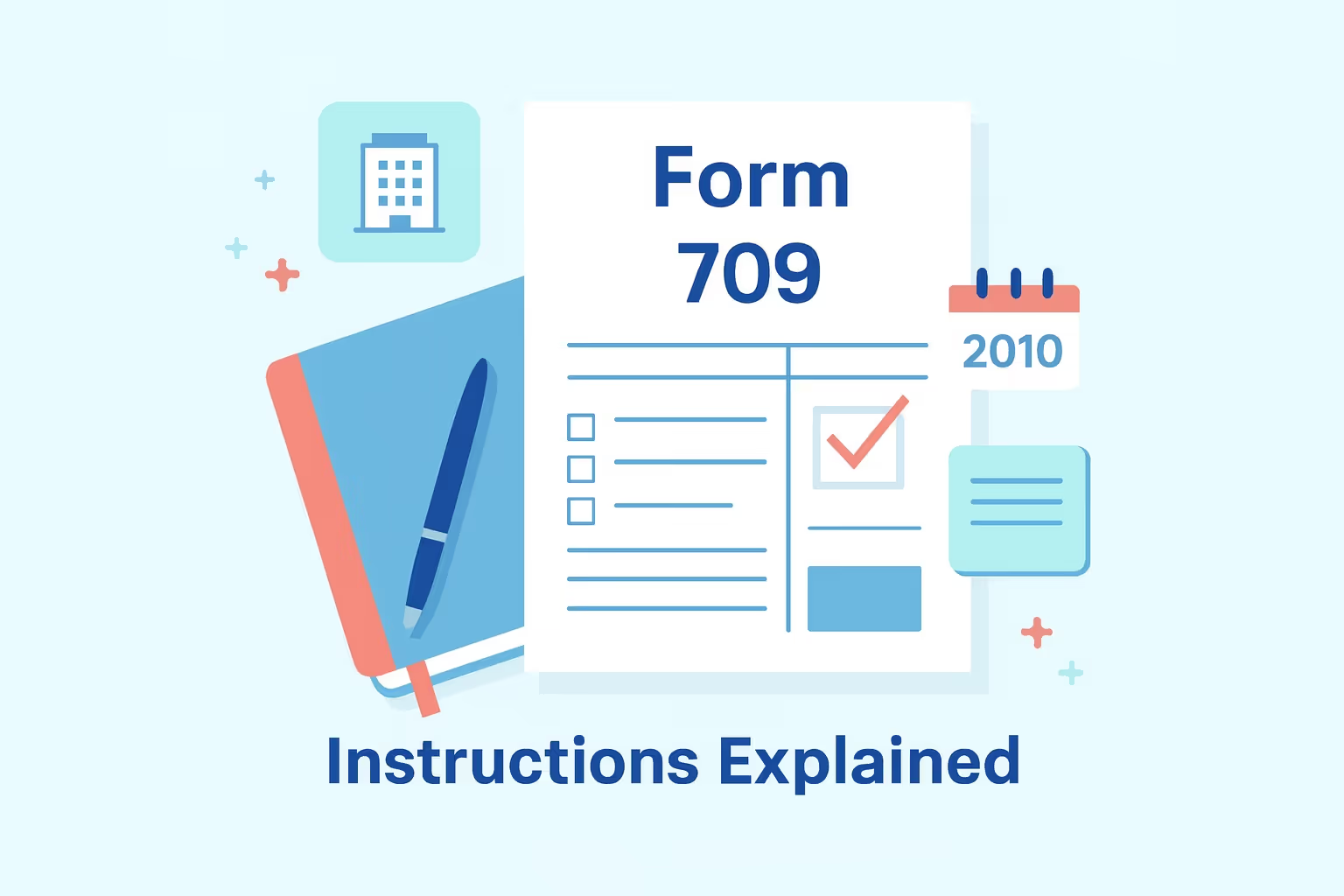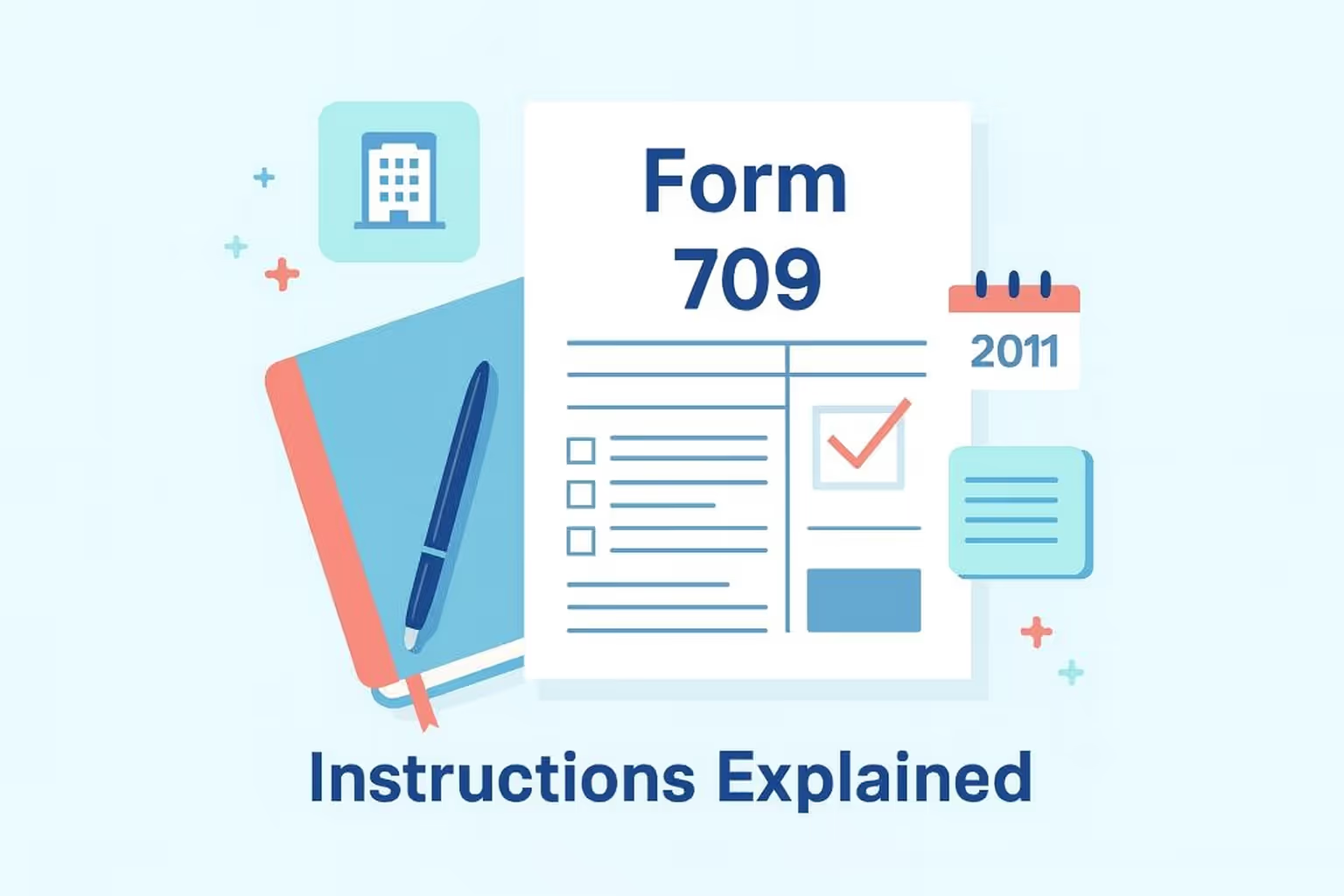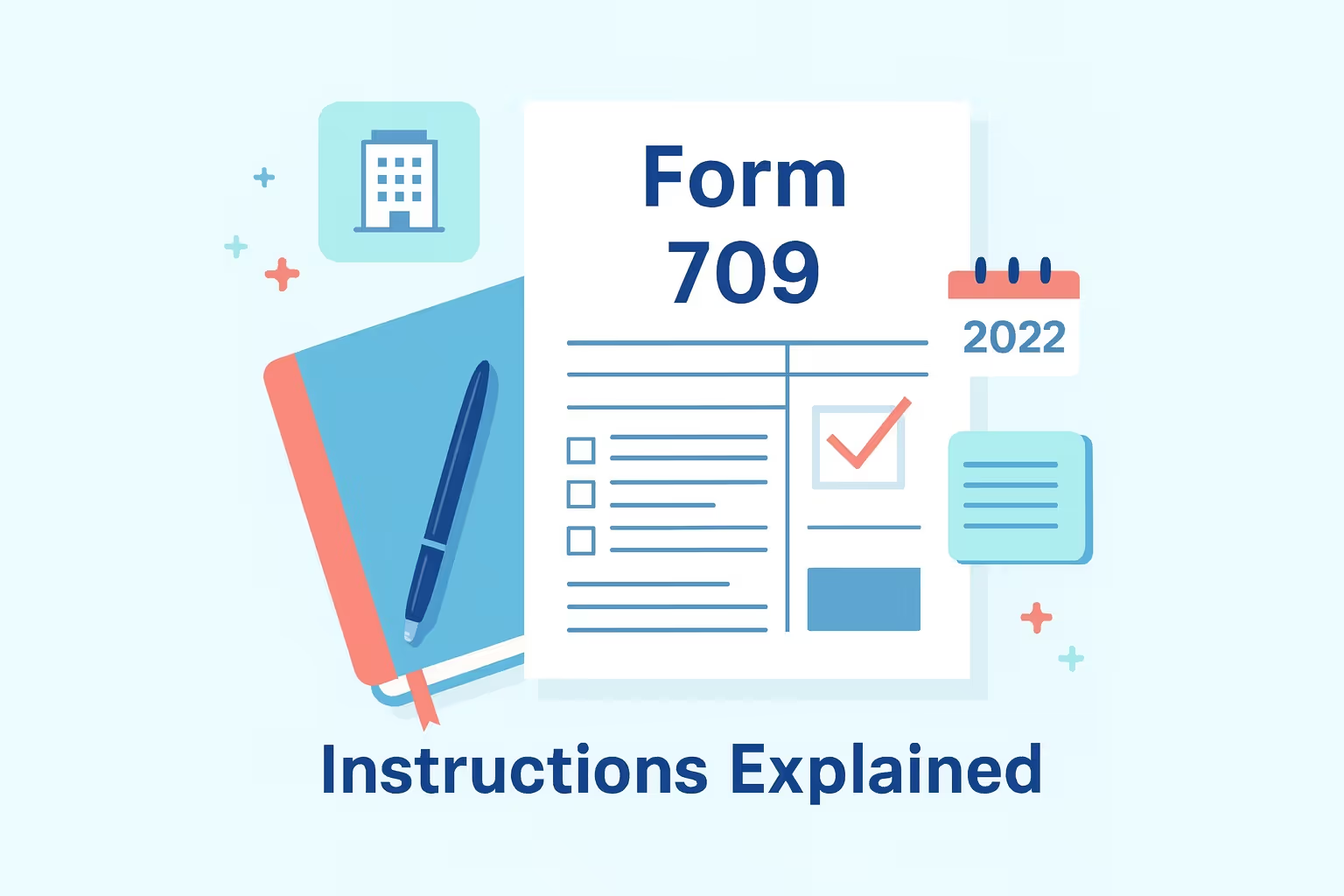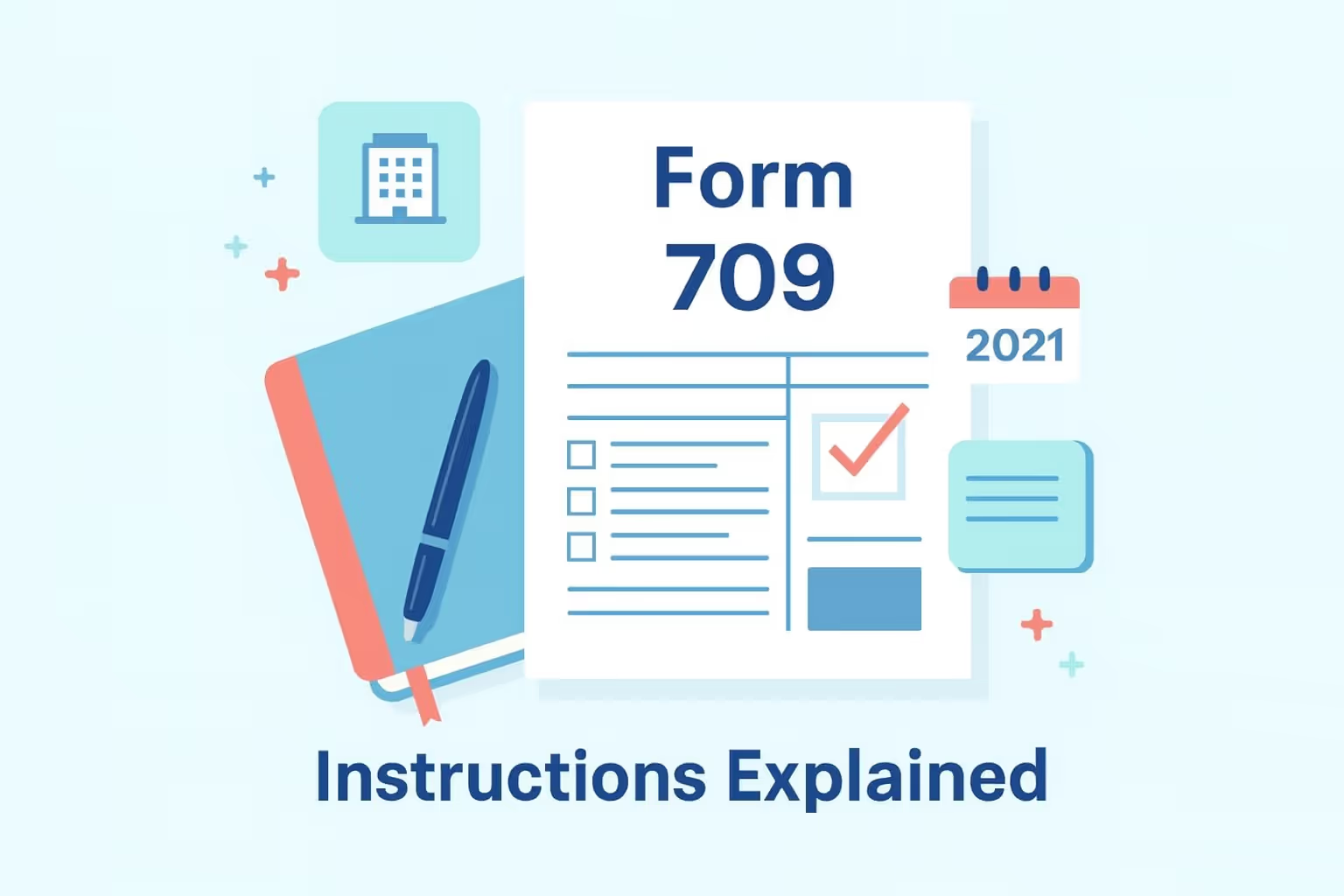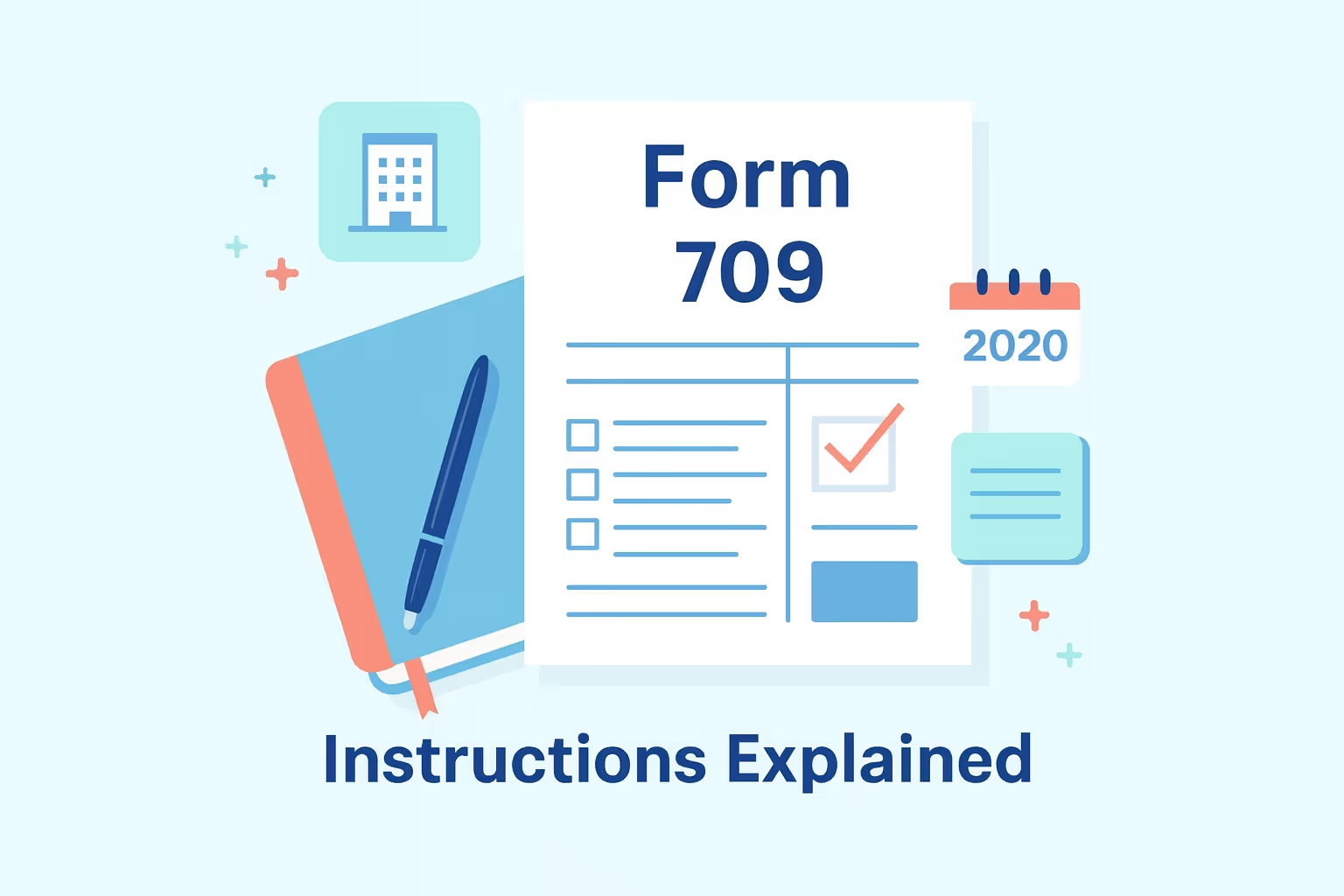Form 706 (2012) provides guidance for executors filing a federal estate tax return with the Internal Revenue Service. This form reports the fair market value of all assets owned on the decedent’s date of death, determines the total estate tax liability, and applies eligible deductions under the Internal Revenue Code. Executors must document all property acquired through ownership or inheritance, including securities, insurance, real estate, and other tangible assets, to ensure each valuation meets the federal estate tax standard.
For decedents dying in 2012, a filing is required if the gross estate and lifetime gifts exceed the $5,120,000 exemption amount or if a portability election is being made to transfer unused exclusion benefits to a surviving spouse. Executors must include all lifetime gifts made by the decedent and ensure the return accurately reflects the total taxable estate. Executors should verify each transaction, exemption, and deduction to maintain compliance and transparency throughout the filing process.
Executors must understand complex reporting rules and follow strict timelines when preparing a federal estate tax return. A complete and accurate submission protects the estate’s interests and ensures proper application of available deductions, credits, and elections under federal law.
Estate Tax Exemption and Fair Market Value
Understanding the estate tax exemption and the fair market value standard is crucial for executors filing Form 706 for decedents who died in 2012 or later. The Internal Revenue Service requires reporting the total value of all assets owned on the decedent’s date of death. These include real estate, securities, insurance policies, business interests, and other personal property.
The 2012 exemption amount, set at $5,120,000 under the Tax Relief, Unemployment Insurance Reauthorization, and Job Creation Act of 2010, determines whether a federal estate tax return must be filed. Executors use this threshold to establish whether the estate qualifies for taxation or remains exempt from federal estate tax.
The fair market value standard ensures every asset is valued at an amount a willing buyer and seller would agree upon under ordinary conditions. Executors must apply this definition uniformly to avoid discrepancies in tax liability. The Internal Revenue Code requires comprehensive documentation for each asset category to substantiate reported values.
Supporting records, including appraisals, statements, and professional valuations, should be maintained with the return to confirm accuracy and compliance. Accurate valuation protects the estate and beneficiaries from disputes or audits related to incorrect asset reporting.
Assets Requiring Valuation for Estate Tax Purposes
- Real Estate: Appraise residential, commercial, and agricultural properties, including family farms and income-producing land, to ensure accurate valuations.
- Securities: Report the mean between the high and low trading prices on the decedent’s date of death.
- Insurance Policies: File Form 712 for all policies owned or controlled by the decedent.
- Personal Property: Include valuables such as jewelry, collectibles, artwork, and vehicles.
- Business Interests: Provide professional appraisals for closely held corporations and partnerships.
- Property Acquired Before Death: Record the adjusted basis and apply the step-up in value where applicable.
IRS Publication 559, Survivors, Executors, and Administrators, provides guidance on fair market value standards and valuation methods. Executors who follow these principles ensure the estate reflects an accurate economic measure of worth and remains compliant with federal reporting requirements. Thorough documentation also supports eligibility for deductions, exemptions, and special use valuations that may reduce the estate’s taxable value.
Filing Threshold and Eligibility Requirements
Executors must confirm filing status before preparing a federal estate tax return. The 2012 exemption amount of $5,120,000 establishes whether the estate must file. The Internal Revenue Service requires Form 706 when the gross estate, adjusted taxable gifts, and gift tax exclusions meet or exceed the threshold. The executor may still need to file Form 706 if making a portability election, even when the estate remains below the exemption amount.
- Who Must File: File Form 706 when the combined value of the gross estate and lifetime gifts exceeds $5,120,000. Include all assets owned on the decedent’s date of death and any gift tax amounts that reduce the remaining exemption amount. Include any generation-skipping transfer tax exposure when calculating total transfer value.
- Executor’s Authority: Provide letters testamentary or court appointment confirming fiduciary status. Maintain custody of records, sign the federal estate tax return, and verify that valuations, deductions, and elections align with the Internal Revenue Code. Retain originals and copies for at least three years after filing to support every computation.
- Portability Election: File a timely return to transfer the deceased spousal unused exclusion to a surviving spouse. Report prior DSUE amounts and confirm the most recent deceased spouse for accurate estate tax liability planning. Coordinate DSUE tracking with any lifetime gifts reported on prior gift tax returns.
- Filing Deadline: Submit the return within nine months after death. Request a six-month extension with Form 4768 when time is needed to document valuations, reconcile schedules, or arrange an estimated payment. Adjust the due date when the ninth month ends on a weekend or federal holiday.
- Required Documentation: Assemble appraisals for real estate, business interests, and personal property. Include bank statements, insurance forms, securities statements, will pages, trust agreements, and evidence of charitable giving and gifts. Document the valuation date used for each asset to demonstrate consistent fair market methodology.
- Property Held Jointly: Report the decedent’s share using contribution rules and ownership type. Identify community property, tenancy in common, or joint tenancy, and allocate value according to governing law and ownership records.
- Deductions and Credits: Apply marital and charitable deductions where eligible to reduce tax liability. Evaluate special deductions, state death tax credit, and elections affecting the federal estate tax computation.
- When Filing Is Not Required: Skip Form 706 if the estate falls below the exemption amount, no portability election is needed, and no generation-skipping transfer tax applies. Maintain organized records in case the Internal Revenue Service requests verification.
Determining eligibility with precision prevents filing errors and supports efficient estate administration. The Instructions for Form 706 (Rev. August 2012) describe filing tests, schedule selection, valuation standards, and signature requirements. Executors who follow these requirements file a complete return and protect beneficiaries from unnecessary disputes. Thorough preparation supports accurate IRS assessment and timely processing of the return.
Preparing the Estate Tax Return Step-by-Step
Executors should follow a structured process when preparing the federal estate tax return to ensure accuracy and compliance with the law. Each phase involves gathering accurate information, applying consistent valuations, and ensuring compliance with the Internal Revenue Code. A well-documented preparation process helps confirm eligibility for deductions and reduces the likelihood of errors that could affect the estate tax liability.
Step 1: Confirm Executor Appointment
Verify legal authority through letters testamentary or a court appointment before filing. This documentation establishes fiduciary power to represent the decedent’s estate before the Internal Revenue Service. Executors must retain copies of all court orders, wills, and trust agreements that validate their role.
Step 2: Obtain an Employer Identification Number (EIN)
Obtain an EIN by filing Form SS-4 with the Internal Revenue Service. The EIN distinguishes the estate from the decedent’s Social Security number and is required for filing the federal estate tax return, paying tax liabilities, and reporting income generated after death.
Step 3: File Form 56 to Establish Fiduciary Relationship
Submit Form 56 to notify the Internal Revenue Service of the executor’s fiduciary authority. This form ensures that the estate’s records remain adequately associated with the appointed representative and allows for correspondence regarding tax matters.
Step 4: Gather Essential Documentation
Assemble a file containing the death certificate, asset appraisals, financial statements, and prior gift tax returns. Collect valuations for all assets owned, such as personal property, securities, insurance, and business interests. Include documentation for property acquired through inheritance or transfers eligible for special deductions.
Step 5: Complete the Cover Page and General Information
Record the decedent’s date of death, domicile, citizenship, and marital status. List the executor’s contact information, include the gross estate estimate, and identify any elections planned for valuation or payment flexibility.
Step 6: Review and Elect Applicable Provisions
Evaluate options such as Alternate Valuation (Section 2032), Special Use Valuation for a family farm or closely held business (Section 2032A), or Installment Payment under Section 6166. Elections must correspond to the estate’s financial condition and overall filing plan.
Step 7: Prepare Schedules and Deductions
Complete Schedules A through I to detail assets and Schedules J through O for deductions, credits, and transfers. Include lifetime gifts, charitable giving, and liabilities affecting the taxable estate. Verify that each total carries forward correctly into the Recapitulation section.
Step 8: Review, Sign, and Assemble the Return
Reconcile all figures, attach supporting schedules, and sign the return. Maintain copies of the final submission and ensure all valuations reflect fair market value standards. Confirm that each required schedule and attachment is present before mailing the complete package to the Internal Revenue Service.
Following each step ensures accuracy and compliance with federal estate tax law. Organizing documents, confirming elections, and reconciling totals before submission helps executors file an estate tax return that satisfies every Internal Revenue Service requirement. This structured approach strengthens transparency, improves accuracy, and supports a smooth review process once the return reaches the IRS.
Calculating Estate Tax and Generation-Skipping Transfer Tax
Calculating estate tax liability requires a complete accounting of all property interests included in the decedent’s estate. Executors must value every asset at its fair market value, deduct allowable expenses, and apply applicable credits under the Internal Revenue Code.
The calculation process also incorporates lifetime gifts and any prior taxable transfers to determine the final taxable estate. Establishing accuracy in each computation ensures the estate meets federal reporting requirements and avoids discrepancies that could delay acceptance of the return.
The federal estate tax uses a graduated tax rate applied to the taxable estate, which is the gross estate minus allowable deductions. Executors must include all property subject to estate tax purposes, such as personal property, securities, insurance, and business interests. Lifetime gifts previously made by the decedent affect the total exemption amount remaining. Each gross estate adjustment must include documentation showing the reported value and the reason for inclusion.
- The gross estate must include all assets owned at the time of death, including real estate, closely held business interests, financial accounts, and tangible personal property.
- Allowable deductions must account for funeral costs, administrative expenses, debts, marital deductions, and charitable giving deductions, all of which must be supported by documentation.
- The taxable estate is calculated by subtracting allowable deductions from the gross estate and adding any adjusted taxable gifts made during life.
- The unified credit reduces the total tax owed based on the applicable exemption amount, ensuring estates below the threshold remain exempt from federal estate tax.
- The gift tax exemption coordination requires reviewing prior gift tax returns to reconcile total lifetime gifts against the available exclusion amount.
- The applicable tax rate must follow the progressive brackets set forth under the 2012 law to ensure accurate computation based on the estate’s total taxable value.
- Special deductions apply to valuation discounts, conservation easements, and special use elections for qualifying properties, including family farms and small businesses.
The Internal Revenue Service imposes the generation-skipping transfer tax (GST) when property passes to beneficiaries more than one generation below the decedent, such as grandchildren. Each individual has a GST exemption equal to the federal estate tax exemption amount. Executors must allocate the exemption carefully to trusts or direct transfers on Schedule R to prevent double taxation and preserve family wealth across generations.
A complete and accurate tax calculation verifies both estate and GST liability. Consistent documentation, reconciliation of lifetime gifts, and precise application of rates help executors meet compliance standards. Diligent preparation ensures every deduction, credit, and exclusion benefits the estate while maintaining transparency for all beneficiaries.
Estate Tax Payment Options and Deadlines
Executors must arrange timely payment of any estate tax liability to remain compliant with federal requirements. The Internal Revenue Service imposes specific payment deadlines, extension procedures, and installment options as outlined in the Internal Revenue Code. Each payment method requires precise documentation to match the estate’s Employer Identification Number (EIN) and ensure that amounts are applied correctly to the federal estate tax account.
Payment Deadline
- The estate tax payment is due within nine months after the decedent’s date of death.
- The Internal Revenue Service charges interest on unpaid balances starting the day after the due date.
- Extensions to file the federal estate tax return do not automatically extend the time to pay the tax.
- Executors should allow sufficient time to confirm valuations and arrange funds before the payment deadline.
Payment Methods
- Check or Money Order: Make payments payable to the “United States Treasury,” including the EIN, “Form 706,” and tax year reference.
- Electronic Federal Tax Payment System (EFTPS): Authorize secure electronic payments directly from the estate’s bank account.
- Wire Transfer: Initiate a payment through a financial institution to the U.S. Treasury, retaining confirmation records for estate files.
- Estimated Payment: Submit a partial payment if asset valuations remain pending to minimize future interest and late charges.
Extensions
- Executors may request a six-month extension to file using Form 4768 when additional time is needed for valuations, schedules, or elections.
- An extension to the file does not delay payment; unpaid amounts continue to accrue daily interest.
- Demonstrating reasonable cause can support a request for additional time to pay under specific provisions.
- Maintain correspondence and approval confirmation from the Internal Revenue Service for all extension requests.
Installment Payments (Section 6166)
- Estates meeting the 35 percent threshold of closely held business or family farm interests may qualify for installment payments.
- Installment plans span 14 years, featuring interest-only payments for the first four years.
- Executors must elect this option on a timely filed return and satisfy ongoing reporting obligations.
- Early disposition of qualifying assets may accelerate the remaining balance due.
The IRS Instructions for Form 4768 provide detailed guidance for requesting additional time to file or pay. Timely payment protects the estate from additional charges, preserves eligibility for elections, and demonstrates compliance with federal estate tax law. Executors who document every transaction and monitor deadlines ensure the estate meets its full tax obligations without unnecessary financial strain.
Electing Portability and DSUE Transfer
A portability election allows the transfer of a deceased spouse’s unused exclusion (DSUE) amount to the surviving spouse, expanding the total exemption available for future gifts or estate transfers. Executors must elect portability on a timely filed federal estate tax return to preserve the deceased spouse’s remaining exclusion amount. Understanding portability ensures that the surviving spouse receives the full estate tax benefit permitted under federal law and avoids losing the unused exclusion.
- Definition of Portability: Portability enables a surviving spouse to use the portion of the federal estate tax exemption that remained unused at the decedent’s death. The combined exemption increases the surviving spouse’s ability to transfer wealth through lifetime gifts or at death without exceeding the exclusion limit.
- Eligibility Criteria: Only estates of decedents who were U.S. citizens or residents at the time of death are eligible to elect portability. The executor must file a complete and timely Form 706, even when the gross estate value does not exceed the filing threshold, to secure the DSUE transfer for the surviving spouse.
- Calculation of DSUE Amount: The DSUE equals the basic exclusion amount minus the sum of the taxable estate and adjusted taxable gifts. Executors must confirm all lifetime gifts, apply prior exclusions, and reconcile figures across all schedules to ensure accuracy in determining the transferable amount.
- Filing Method: The election occurs automatically when Form 706 is properly filed. Executors who wish to decline portability must check the opt-out box in Section A, Part 6. Late elections may be unavailable unless the estate qualifies for limited relief under regulatory provisions.
- Everyday Filing Situations: Estates below the exemption amount may still file solely to preserve portability for the surviving spouse. This strategy benefits families expecting significant future asset appreciation or those planning for future lifetime gifts through estate planning.
- Planning Implications: The DSUE may be used for both lifetime gifts and estate transfers, allowing a surviving spouse to manage tax exposure more effectively. Portability simplifies estate planning for married couples, allowing for flexibility as their financial goals evolve.
A timely portability election ensures a surviving spouse receives the full benefit of the deceased spouse’s unused exclusion. Executors who complete accurate filings safeguard family wealth, align estate planning strategies, and ensure compliance with federal estate tax requirements. Proactive planning during this process strengthens financial stability and preserves generational wealth for future heirs.
Estate Compliance, Planning, and Recordkeeping
Maintaining accurate records and implementing a strategic estate plan strengthens compliance with federal estate tax law. Executors must manage documentation precisely, report property interests accurately, and coordinate filings with related income and gift tax returns to maintain compliance with applicable regulations. Thorough recordkeeping also provides legal protection during audits and helps beneficiaries understand how the estate was valued, administered, and distributed.
Maintain Complete Documentation
Executors should maintain detailed files containing asset valuations, receipts, appraisals, and correspondence linked to every item reported on the federal estate tax return. Each schedule must align with the supporting evidence, ensuring consistency in fair market value across categories such as real estate, personal property, securities, and insurance.
Executors should include prior gift tax returns, charitable giving statements, and documents supporting deductions or elections claimed under the Internal Revenue Code. Retaining a complete audit trail protects the estate from disputes and demonstrates full compliance with federal reporting requirements.
Coordinate Estate and Income Reporting
Estates generating income after the decedent’s death must file Form 1041, the fiduciary income tax return, in addition to the federal estate tax return. Executors should reconcile asset valuations between both filings to prevent inconsistencies. Property acquired through inheritance may require a step-up in basis for income tax reporting purposes, which must correspond to the estate valuations reported on Form 706. Coordinated reporting across all returns ensures that each transfer, deduction, and election supports accurate tax computation and long-term compliance.
Review and Update the Estate Plan
An updated estate plan ensures ongoing alignment with tax laws, family goals, and financial conditions. Executors and beneficiaries should review wills, irrevocable trusts, and related instruments after completing Form 706 to identify adjustments that may improve future tax efficiency. Evaluating elections such as special use valuation, portability, or marital deductions can also help refine strategies for future filings. Documenting these updates reinforces clarity in asset distribution and prepares the estate for subsequent administrative requirements.
Adequate recordkeeping and well-structured estate planning reinforce confidence in every stage of the filing process. Executors who maintain organized documentation, coordinate multiple tax returns, and periodically review planning documents help safeguard family assets and ensure compliance with federal estate tax law. Sustained diligence in these areas provides a foundation for future financial stability and transparent estate administration.
Frequently Asked Questions
What are the main estate tax purposes of filing Form 706?
The primary estate tax purposes of filing Form 706 include reporting the fair market value of assets, calculating tax liability, and applying deductions and credits as outlined in the Internal Revenue Code. Executors use this federal estate tax return to document transfers of property, claim exemptions, and elect provisions such as portability. Filing ensures transparency, compliance, and an accurate assessment of the decedent’s estate, safeguarding beneficiaries and maintaining proper tax administration in accordance with federal law.
When must executors file an estate tax return for the 2012 tax year?
Executors must file an estate tax return if the gross estate, adjusted taxable gifts, and specific gift tax exclusions exceed $5,120,000, the expanded exemption established under the Jobs Act and related tax cuts. Filing is also required when electing portability, reporting generation-skipping transfers, or documenting lifetime gifts for tax purposes. Timely submission, supported by accurate valuations and documentation, ensures compliance and eligibility for deductions under federal estate requirements.
How do the increased exemptions and tax cuts affect most estates?
The increased exemption under the Jobs Act and associated tax cuts significantly reduced the number of estates subject to the federal estate tax. For 2012, most estates valued below $5,120,000 were exempt from filing, unless they elected portability or reported specific transfers. Executors managing estates exceeding the exemption must still calculate total net worth, verify deductions, and maintain supporting evidence to determine the taxable amount under applicable estate tax purposes and valuation standards.
How should executors handle property valued for gift tax purposes?
Executors must include prior taxable gifts when determining the total estate value for gift tax purposes. These lifetime transfers reduce the remaining exclusion available under the increased exemption amount. Accurate reporting requires reconciling historical gift tax returns with the federal estate return to ensure consistency. Correctly accounting for gifted property helps confirm eligibility for credits, prevents duplication, and ensures that all transferred assets reflect their fair market value and are allocated correctly across the relevant tax schedules.
Does estate size or net worth determine filing requirements?
Yes, filing requirements depend on the estate’s total net worth, including real estate, securities, insurance, business interests, and personal property. When the combined value of all assets, plus adjusted taxable gifts, exceeds the expanded exemption amount of $5,120,000, the executor must file Form 706. Comprehensive valuation, detailed records, and accurate categorization of assets ensure the correct computation of federal estate obligations under existing tax law.
What advantages apply to estates below the federal filing threshold for 2012?
Estates below the filing threshold may still elect portability, allowing the transfer of any unused exclusion to a surviving spouse. This proactive step preserves potential benefits if the spouse’s net worth later increases. Filing also supports compliance with gift tax purposes, protects future exemption eligibility, and documents asset valuations for recordkeeping. Even non-taxable estates may gain strategic advantages through accurate reporting and coordinated estate planning under federal estate guidelines.
How do legislative changes like the Jobs Act influence estate planning?
Legislative changes, such as the Jobs Act, which introduced increased exemptions and various tax cuts, have a direct impact on estate planning strategies. Executors and advisors must regularly assess the estate’s structure, monitor net worth, and update planning documents to reflect current law. Aligning estate tax purposes with evolving legislation ensures accurate reporting, optimized deductions, and strategic flexibility for most estates seeking to preserve value and minimize future taxable exposure.




























